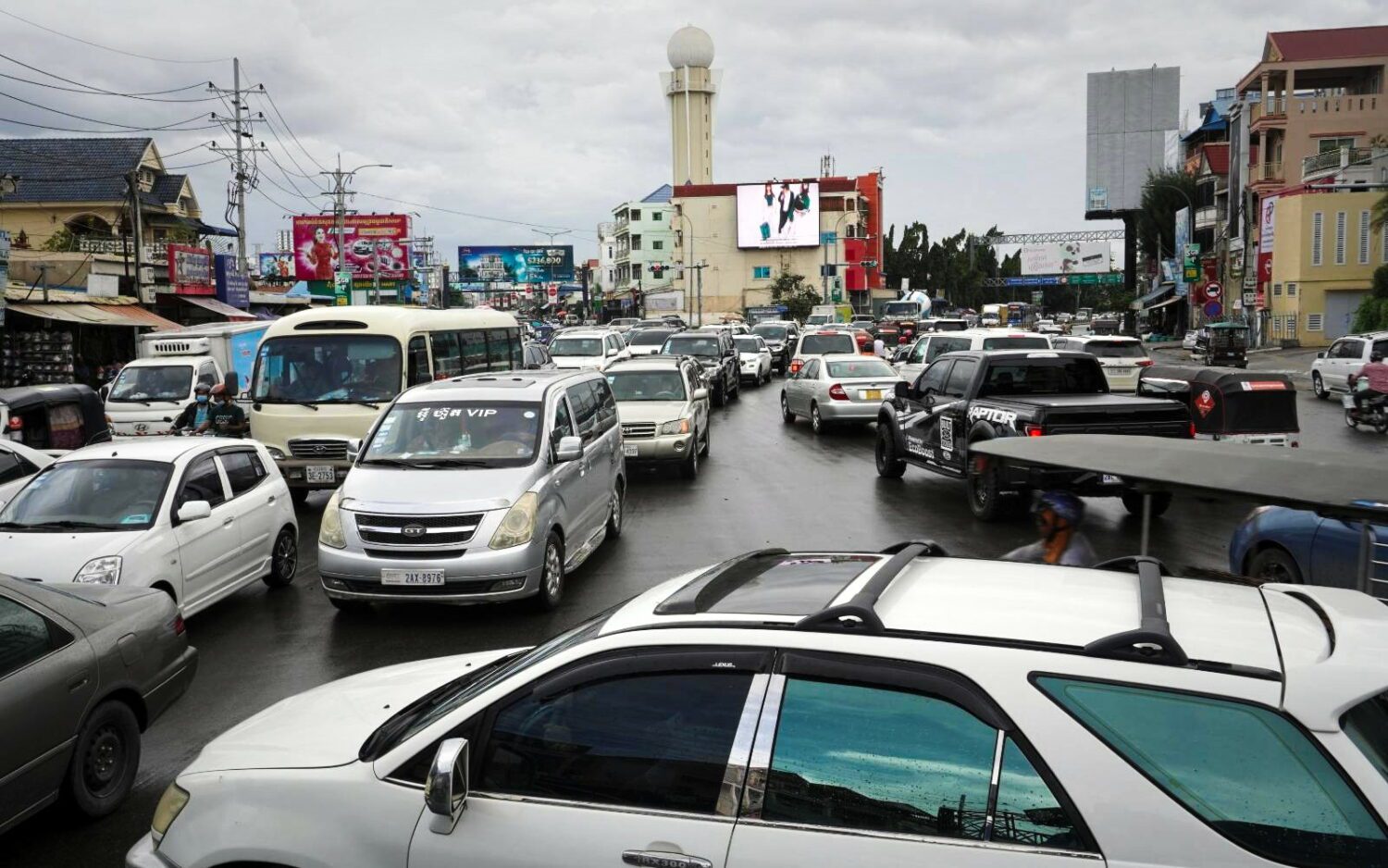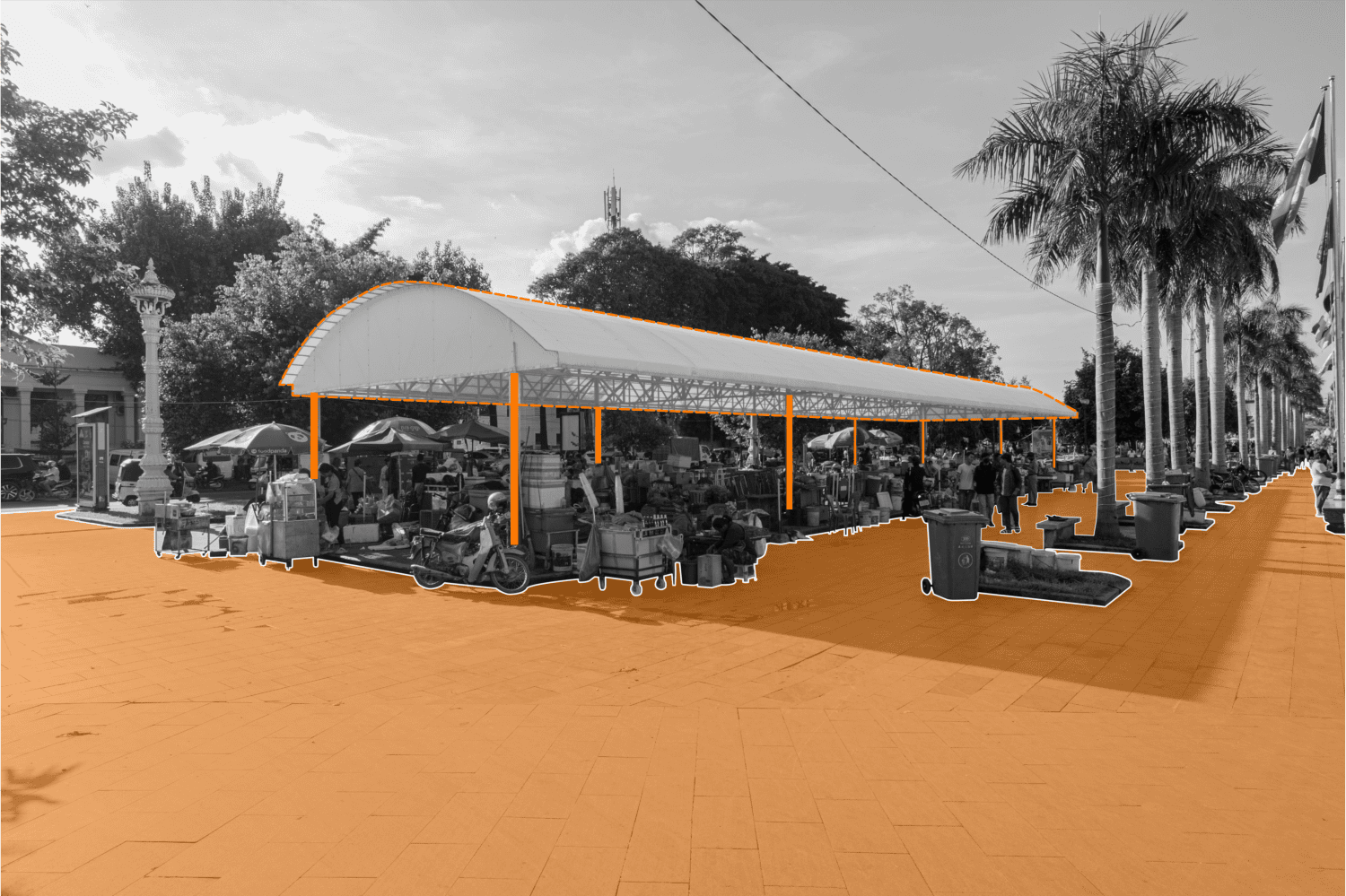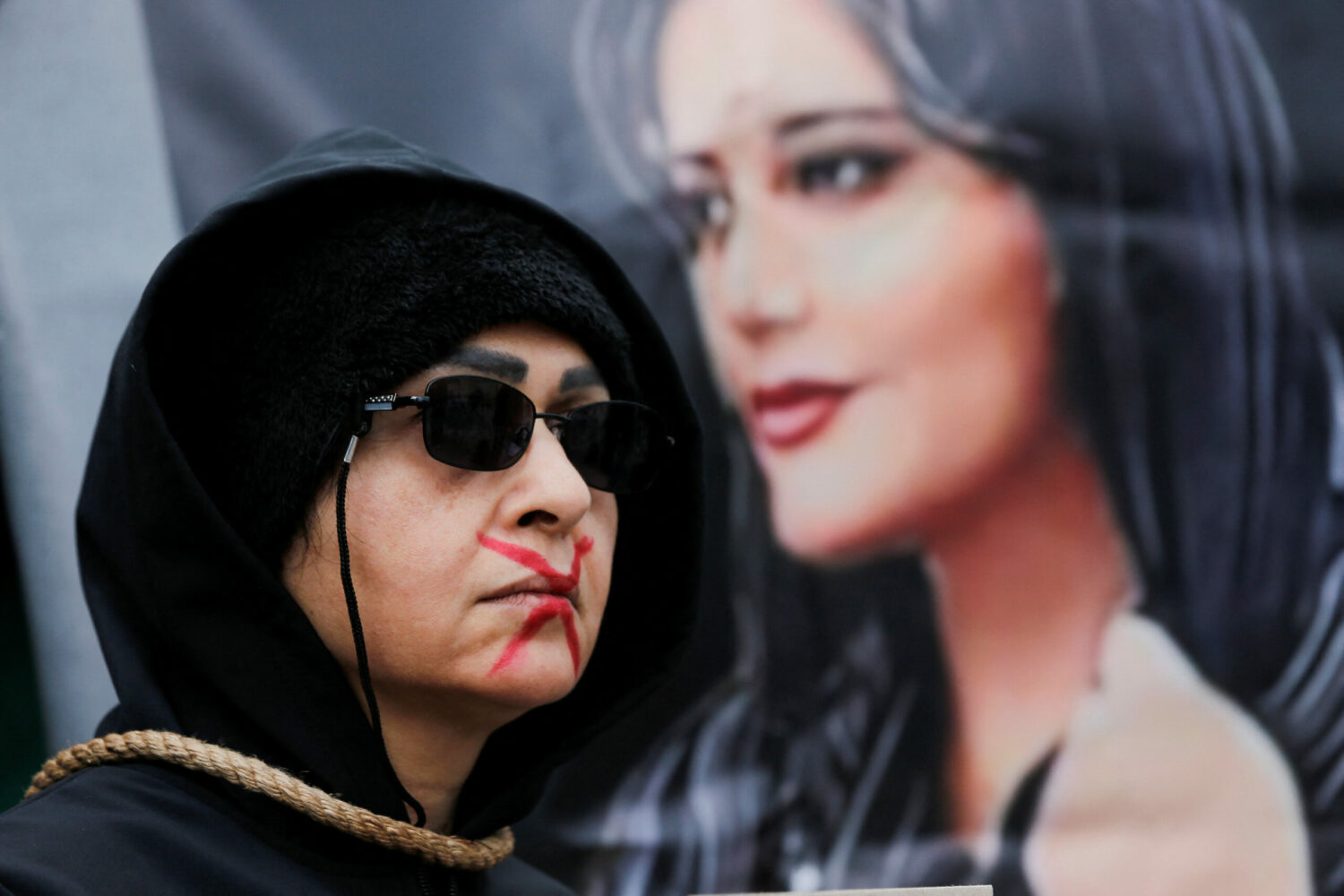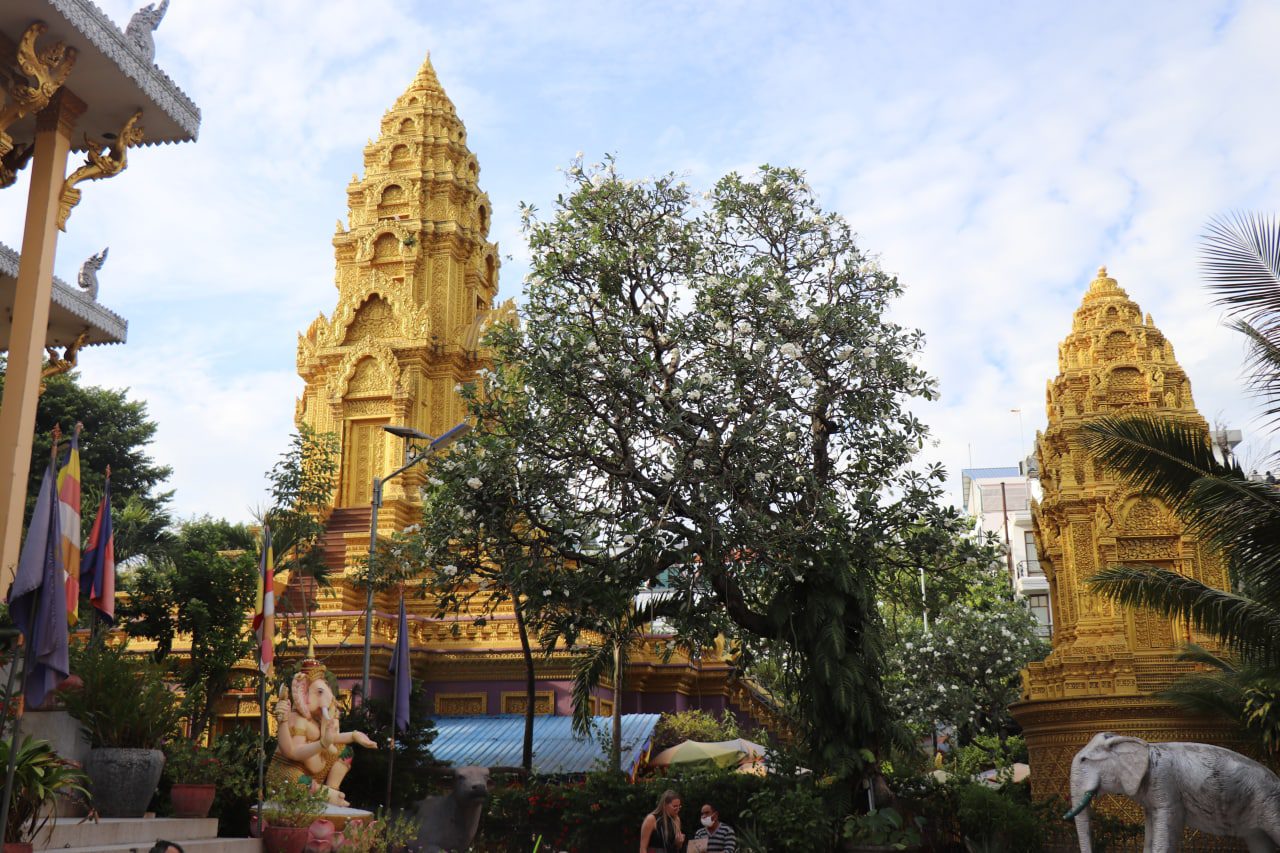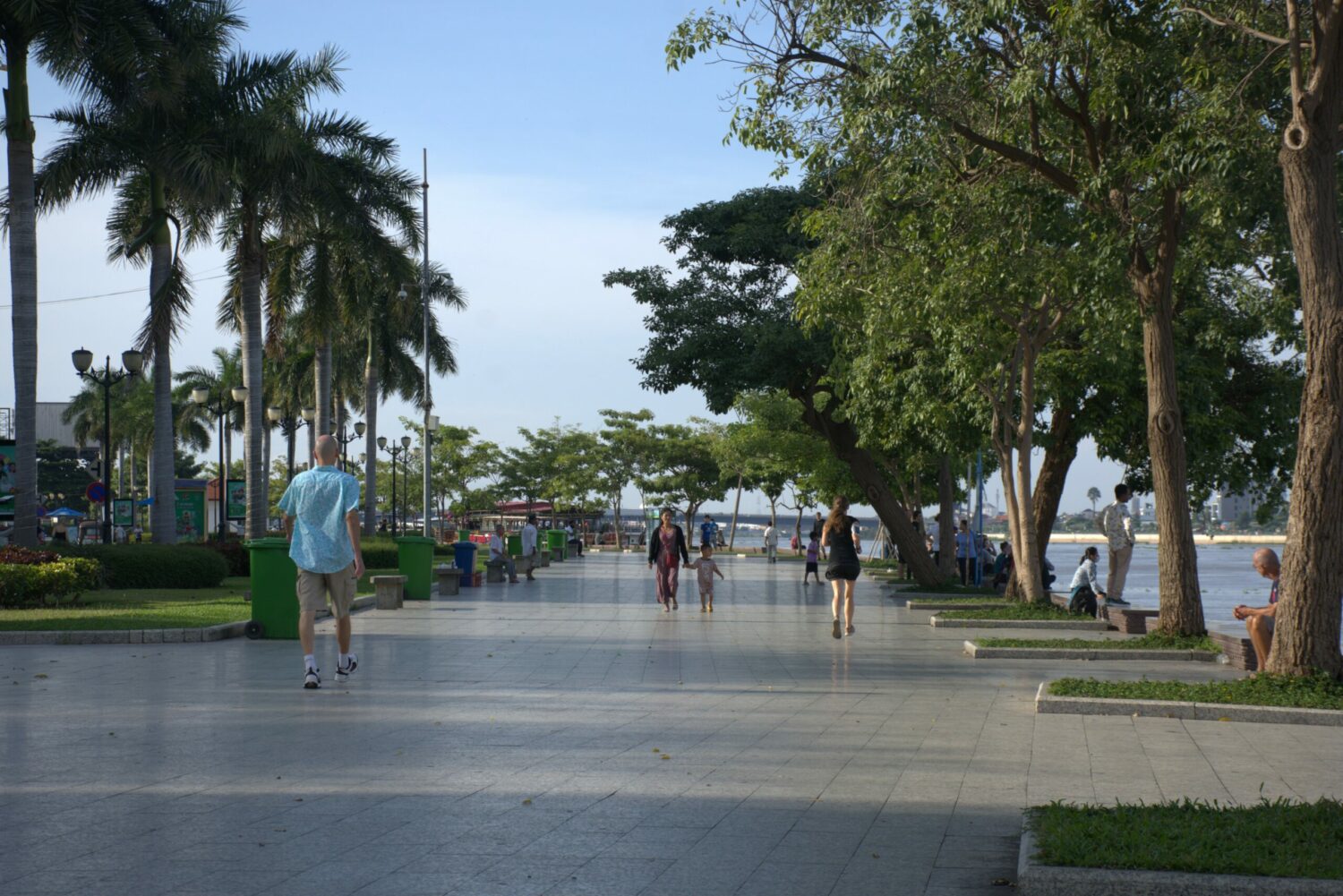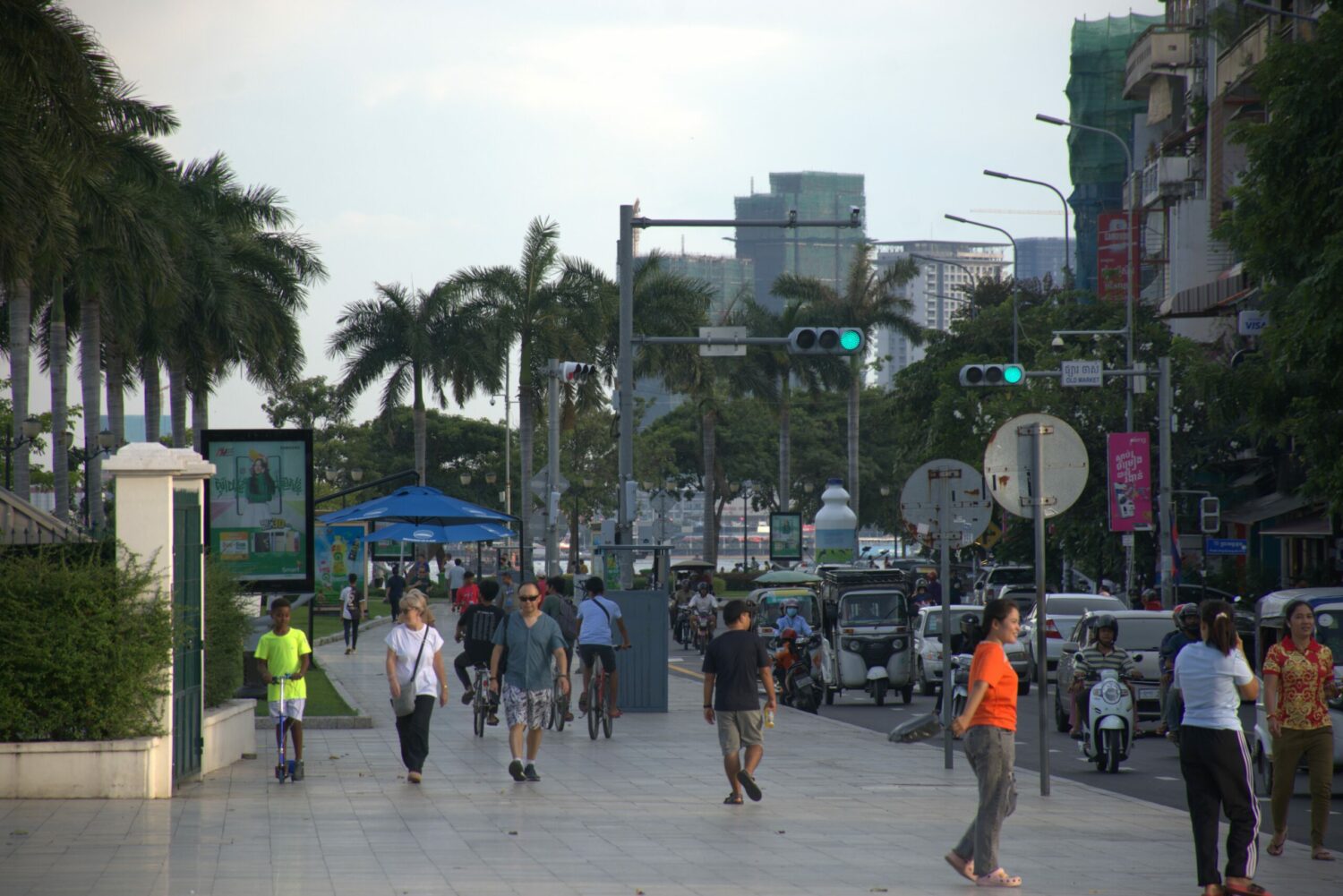When evening approaches, Phnom Penh’s citizens begin their arduous journey home. Many of these commuters who spend their days in the city center will at some point have to make their way across Boulevard 271.
 Ses Aronsakda is a junior researcher at Future Forum. Educated as an architect, he conducts research on Phnom Penh’s urban planning with interests in all aspects of cities and urban design.
Ses Aronsakda is a junior researcher at Future Forum. Educated as an architect, he conducts research on Phnom Penh’s urban planning with interests in all aspects of cities and urban design.
This street, colloquially known as Plov T’nub, or Dike Road, wraps around Phnom Penh’s dense urban core. The boulevard’s function as Phnom Penh’s first Ring Road makes it one of the most congested thoroughfares in the capital, particularly where the road intersects other major boulevards.
Thus far the strategy to alleviate such choke points has been adding flyover bridges to congested intersections. No less than three flyovers have been built over the last several years for Boulevard 271 alone.
Recently, a fourth flyover was announced where Boulevard 271 intersects with Monivong Boulevard and Samdech Techo Hun Sen Boulevard, with an estimated construction price tag of $36.8 million for the interchange.
Flyover projects like this one double down on a strategy that clearly hasn’t worked to lessen traffic burdens in the capital. This car-centric solution is a shortsighted approach that may actually lead to even more traffic congestion over time.
We Need to Focus on Moving People, Not Cars
A solution based purely on increasing car flow will fail due to the space and financial inefficiency of car-centric infrastructure.
A single car lane has the capacity to move 1,100 people per hour, according to the Global Designing Cities Initiative. This lack of efficiency is not helped by the fact that most cars only carry one to two passengers despite having capacity for more. In contrast, a single dedicated bus lane can carry 6,000 people per hour and a two-way bike track can carry 7,000 people per hour.
The latest flyover for Boulevard 271 will be a triple stack interchange, 1200 meters long and 17 meters tall at its apex, according to OCIC, the main contractor. Apart from cost, the project will require thousands of cubic meters of concrete, several hundred tons of steel and asphalt, and a 36-month construction time just to build one intersection.
Ultimately, this colossal structure will fail at its primary task of alleviating traffic congestion in Phnom Penh. This is due to a concept commonly referred to as Braess’s paradox, also called induced demand: When you build more of something — in this case roads — consumers use it more.
In fact, economists studying road supply and demand in the U.S. between 1980 and 1990 found that road supply and demand move in complete lockstep. If a city increased road surface area by 10%, the amount of driving in the city went up by 10%. If gridlocked Phnom Penh adds more roads, it will only result in a proportional amount of traffic — the status quo will remain, wasting millions of dollars and years of construction time.
Take Texas’s infamous Katy Freeway as an example. It became clogged with traffic, so in 2008 the state of Texas expanded it to 23 lanes at a cost of $2.8 billion. In the short-term this strategy appeared to resolve the issue. But in the long-term congestion has actually risen. Based on data from 2011-2015, travel time for morning commuters, compared with pre-construction times, has increased by 25 minutes (or 30%) and the time it takes for an afternoon commute has increased by 23 minutes (or 55%).
Policy makers find themselves in this trap, because of a fundamental misunderstanding in measuring transportation solutions based exclusively on car flow. It should be remembered that the purpose of transportation planning is to move people, so let’s not conflate cars with people.
It is obvious that a car-oriented solution is bound to fail, hence a new approach which focuses on moving people is needed. In the case of Boulevard 271, city planners should recalibrate their strategy to reimagine the first ring road to be a transit and people friendly thoroughfare.
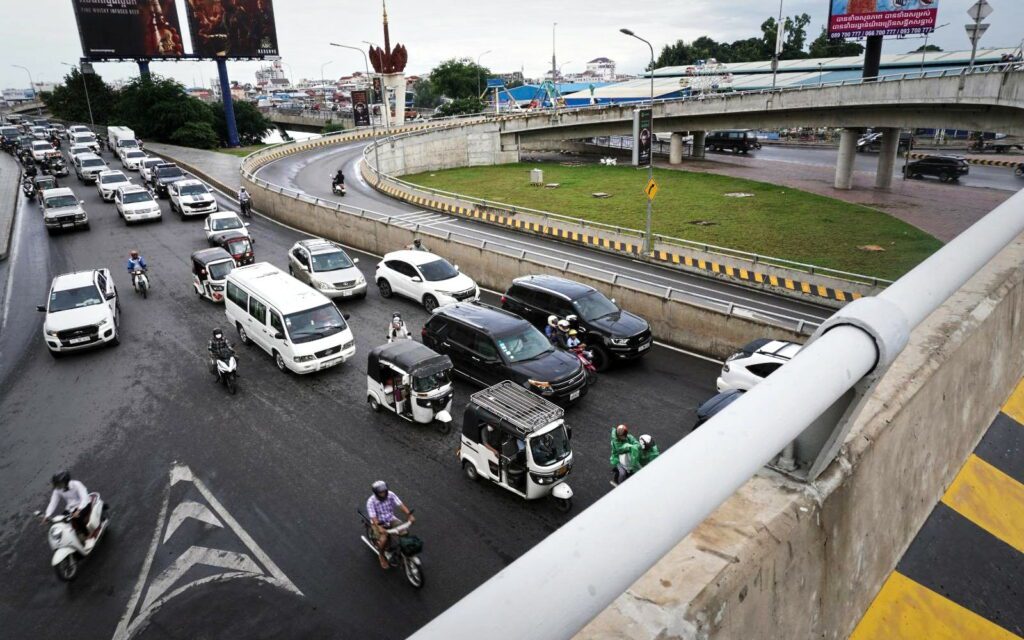
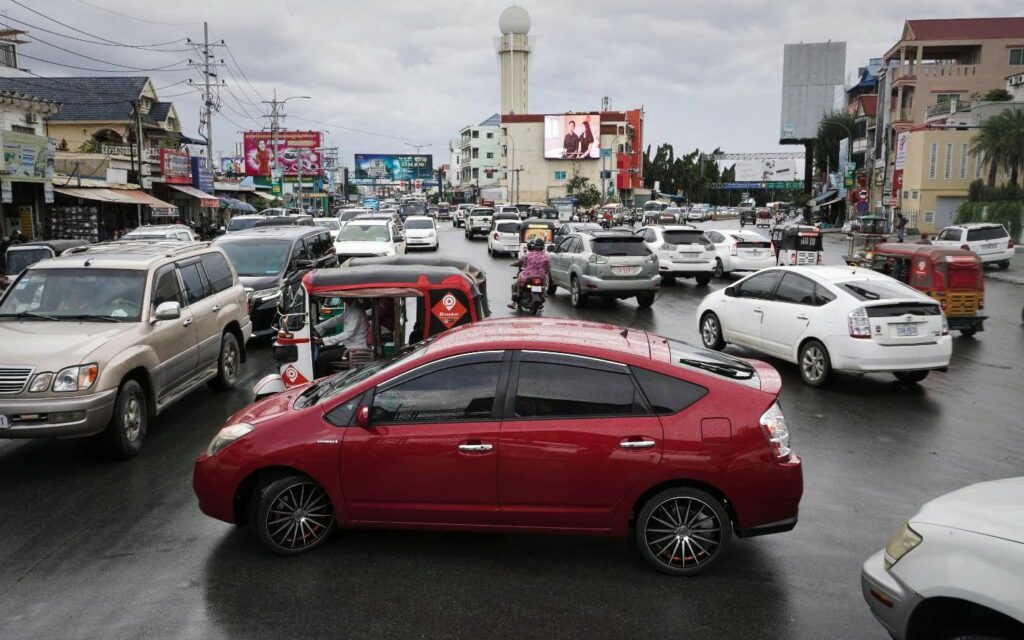
A Transit- and Active Commute-Oriented Ring Road
There are ways to improve traffic flow along this boulevard that don’t involve expanding the road or building any flyovers.
The urban fabric along Boulevard 271 is densely built-up resulting in a right-of-way of only 25 meters in most sections: there is no space to expand. To overcome this challenge, Phnom Penh planners can examine cities like Vienna which rehabilitated its first ring road, the “Ringstrasse,” into a tree-lined and transit-friendly thoroughfare.
The 5.3-kilometer-long Ringstrasse was built in place of Vienna’s historical defensive walls, effectively surrounding Vienna’s historical center. Naturally, the urban fabric around it is densely built and historically important.
Recognizing the space constraints and the need to transport people, Vienna opted to prioritize the most efficient transportation means. Thus, on most stretches of the Ringstrasse there are only three narrow car lanes. Capacity is augmented by two street tram lines with a combined capacity of 16,000 people per hour.
Additionally, by cutting down on car space, planners also managed to incorporate two bike lanes, boosting capacity by another 15,000 people per hour. These space efficient transportation modes allowed the placement of up to four rows of street trees shading the thoroughfare and adding much needed greenery.
With up to 31,000 active and transit commuters passing through every hour, the Ringstrasse further supports this traffic by providing people-centered amensities like wide, tree-covered sidewalks, beautiful public buildings, public parks, and plazas. And this is not just to the benefits of commuters but to the immense benefit of businesses flanking the ring road as well.
The example of Vienna is contextually relevant for Phnom Penh, which has to contend with the same space constraints and heavy transportation demands of the ring road.
A New Ring Road for Phnom Penh
Similarly, for Boulevard 271 local planners can first commit to reducing car lanes, replacing them with dedicated bus lanes to improve transportation capacity. Currently, Phnom Penh City Bus Line No. 7 serves the boulevard but is placed in mixed traffic, degrading its efficiency.
By eliminating two car lanes and narrowing the remaining lane’s width to 3 meters, it is possible to add two separated bus lanes. This redesign eliminates two lanes capable of carrying 2,200 people per hour, but replaces them with two dedicated public transit lanes carrying 16,000 people per hour.
Moreover this intervention can be quickly and cheaply done, simply by repainting the car lanes and utilizing bollards and barriers to physically separate the bus lanes. Bus stops along the route can also be upgraded to sheltered bus stops, with additional seating added to facilitate commuters.
In accordance with a revised car parking policy, on-street vehicle parking should also be reduced significantly. This serves to dissuade cars and motorcycle usage but encourages commuters to use public transit — only leaving a few spots for freight vehicles to unload goods. Reducing space for private vehicles (driving lanes and parking) actively combats induced traffic, by disincentivizing drivers from using Boulevard 271 unless absolutely necessary.
Furthermore, the space saved from reducing parking space will clawback much needed space for wider pedestrian sidewalks, public seating areas and street trees. This will radically transform the beauty of Boulevard 271, from a cluttered and unshaded environment devoid of pedestrians to a pleasantly shaded and vibrant space.
Taking advantage of this pleasant streetscape, capacity can be further boosted by adding a two-way separated cycling track, adding another 7,000 people per hour. The synergy between active commuting (walking and cycling) for short distances and public transit for longer distance commute can significantly reduce motor vehicles usage in nearby neighborhoods as well. Thus creating a low traffic zone wrapping around Phnom Penh.
Significantly increased foot and cycling traffic will also positively benefit the myriad of businesses lining the boulevard. Many businesses fear losing their vehicle parking spots, yet numerous studies have overwhelmingly indicated that sales and visitors increase when bicycle lanes, sidewalks, and public transit are implemented.
Best of all, these transit- and people-oriented solutions will only cost a fraction of what is typically spent on car-centric infrastructure. I have estimated that these design interventions will cost $14.5 million for the whole 13.3 kilometer length of the ring road. In comparison, this is two and a half times less than the $36.8 million we are planning on spending on this single interchange, and will result in less congestion, less pollution, a better street environment, and a more prosperous and vibrant streetscape for all users.
Urban Transportation Is About People
It is possible for Phnom Penh to reverse its worsening congestion. Achieving this requires city planners to reverse the city’s reliance on private vehicles.
City planners must heed the well-studied negative cost and ineffectiveness of pursuing a car-centric approach to urban transportation. Only by prioritizing more efficient forms of commutes can congestion be reduced.
In doing so we gain space to envision and reimagine Phnom Penh’s streetscape to be more than just places for vehicles to pass through, but as spaces to live, to enjoy, and to share.
Ses Aronsakda is a junior researcher at Future Forum. Educated as an architect, he conducts research on Phnom Penh’s urban planning with interests in all aspects of cities and urban design.


